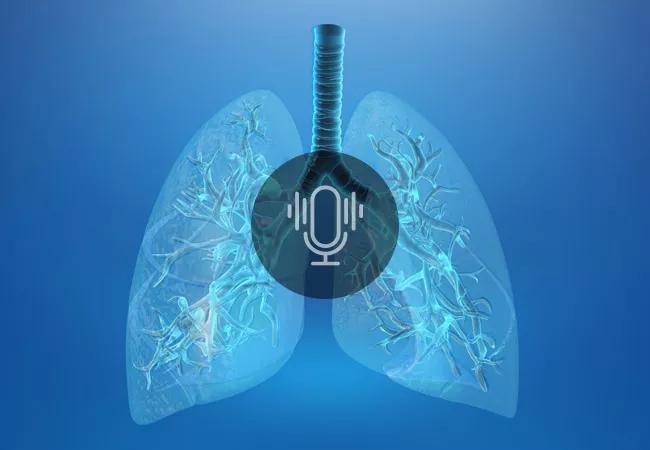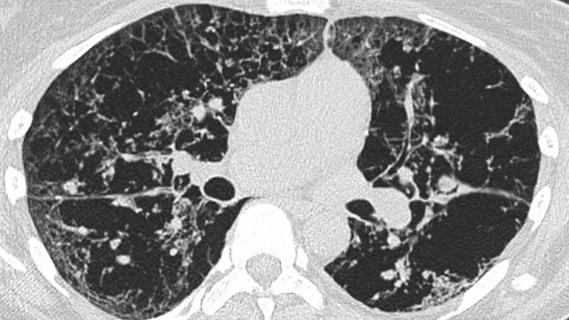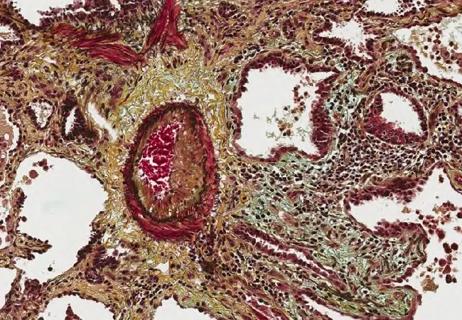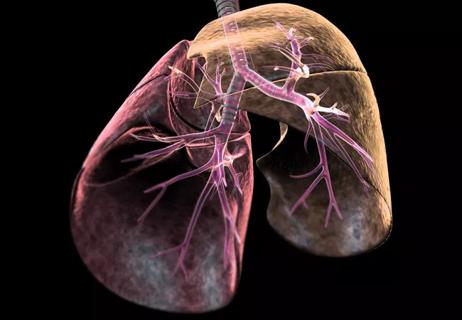Emerging trends are transforming the classification, diagnosis, therapies and management of ILD

Advertisement
Cleveland Clinic is a non-profit academic medical center. Advertising on our site helps support our mission. We do not endorse non-Cleveland Clinic products or services. Policy
While more than 200 conditions fall under the umbrella of Interstitial lung disease (ILD), Dr. Daniel Culver’s approach to ILD focuses on the commonalities.
“The way I think about it is that there may be various ways to start off interstitial lung diseases, but there are final common pathways or shared pathogenetic mechanisms that really mean that the clinical approach to these is convergent rather than divergent,” says Culver, DO, chair of the Department of Pulmonary Medicine at Cleveland Clinic’s main campus.
In a featured episode of Cleveland Clinic’s Respiratory Exchange podcast, Dr. Culver discusses the evolution in classification, diagnosis, treatment and management of interstitial lung disease, including:
Click the podcast player above to listen to the episode now, or read on for a short edited excerpt. Check out more Respiratory Exchange episodes at my.clevelandclinic.org/podcasts/respiratory-exchange or wherever you get your podcasts.
Podcast host Raed Dweik, MD, MBA: You talked about genomic classifiers. How do those fit in the diagnostic picture?
Advertisement
Dr. Culver: Genomic classifier is another technology that’s really emerged in the past several years. This is really looking at gene expression in transbronchial biopsy samples. We’ve conventionally thought that transbronchial biopsy is inadequate for a tissue-level diagnosis. But of course, looking at gene expression with a set of genes – looking for a pattern – the genomic classifier is able with a very good degree of specificity, around 90% specificity, to make a call of usual interstitial pneumonia (UIP).
As you know, UIP does not necessarily mean that you have idiopathic pulmonary fibrosis. There can be other causes of UIP. But the way that the classifier that’s currently in use has been set up is to really prioritize specificity. So, a positive classifier for UIP can give you a good bit of confidence that you actually are dealing with UIP.
In a patient where you come in with an uncertain pretest probability, the genomic classifier can really tilt the needle and allow you to make a confident diagnosis of something like IPF without a more advanced diagnostic technique.
Dr. Dweik: So now, with genomic classifiers and the transbronchial lung cryobiopsy, is there still a role for the open lung biopsy?
Dr. Culver: I think surgical lung biopsy has been a bit of a pariah – and maybe a little bit overly so. In patients who are stable, who have relatively preserved or only moderately impaired lung function, there are data suggesting that the risks of surgical lung biopsy are not tremendously high. They’re certainly less than 5% for important events. We have our own internal data suggesting the same thing.
Advertisement
And for people who have some diagnostic uncertainty after transbronchial lung cryobiopsy, there is a role for surgical lung biopsy. I also think that in centers that don’t do transbronchial lung cryobiopsy, that surgical lung biopsy should indeed be part of the armamentarium. I think it’s important to remember that about 20% of people with interstitial lung disease have what’s called unclassifiable ILD, and that’s a diagnosis that I think is very difficult to make without adequate tissue.
So, if you have a patient after multidiscipline discussion where there’s still a good degree of diagnostic uncertainty – and especially if you’re trying to diagnose something that’s very rare, like idiopathic nonspecific interstitial pneumonia – there’s a recent Belgian series suggesting that going forward with a surgical lung biopsy actually has a good chance of reversing that diagnosis.
Advertisement
Advertisement

Treatments can be effective, but timely diagnosis is key

A Cleveland Clinic pulmonologist highlights several factors to be aware of when treating patients

As median survival increases among patients with CF, clinicians must now be aware of previously uncommon comorbidities emerging as this patient population ages

May allow greater independence and quality of life

Multidisciplinary approach can uncover unsuspected diagnoses

New pathways to consider in the treatment of SSc-ILD

An interview with Daniel Culver, DO
![18-PUL-4645-Tolle-Hero-Image-650x450pxl[5]](https://assets.clevelandclinic.org/transform/StoryPanel/d0dfe399-8e94-4a38-a720-258396b54c23/18-PUL-4645-Tolle-Hero-Image-650x450pxl5_jpg?w=3840&q=75)
An overview of available treatment modalities